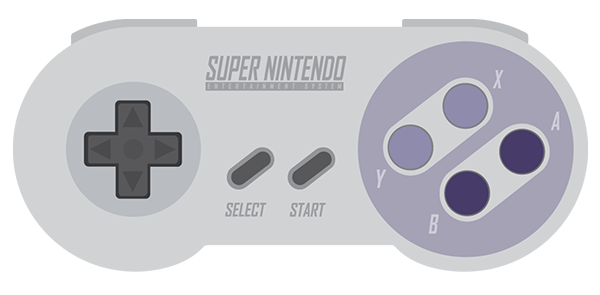Firing up the Super Nintendo back in the day often meant diving into worlds of platforming heroes, epic RPGs, or fast-paced racers. But for those craving something different, something with strategic action and explosive helicopter combat, there was Jungle Strike SNES. As the sequel to the massively popular Desert Strike, this game cranked up the variety, sending players on a global chase filled with thrilling missions and tough decisions.
Let's load up the trusty Comanche and take a flight down memory lane to see why Jungle Strike on the Super Nintendo was a standout title in the 16-bit era.
What Was Jungle Strike All About?
Picking up after the events of Desert Strike, the world faces a new threat. This time, it's a dangerous alliance between Ibn Kilbaba (son of the previous game's villain) and Carlos Ortega, a notorious South American drug lord. Their plan? A nuclear attack on Washington D.C.!
As a skilled, unnamed pilot in a high-tech attack helicopter, your mission is clear: stop them. This isn't just about blowing things up, though there's plenty of that. The story takes you from the familiar streets of D.C. to dense South American jungles, icy Alaskan landscapes (in some versions, though the core SNES game focuses on the main plot), and back again for a final confrontation. It was a high-stakes plot that felt ripped right out of an action movie.
Taking to the Skies: Gameplay on the SNES
Jungle Strike kept the core formula that made Desert Strike a hit but refined it. Played from a classic isometric perspective, you controlled your helicopter (and occasionally other vehicles) across large, multi-objective maps.
The gameplay loop was addictive:
- Mission Variety: Each level had multiple objectives. Destroying enemy installations, rescuing hostages, capturing enemy personnel, or protecting VIPs – it wasn't just mindless shooting.
- Resource Management: This was key! Your chopper had limited fuel, armor, and ammunition (machine gun, Hydra rockets, Hellfire missiles). You constantly had to monitor your resources on the map screen and seek out supply crates or friendly pickups. Running out of fuel over enemy territory was a death sentence!
- Vehicle Switching: A cool addition was the ability to pilot other vehicles on specific missions, like a speedy motorbike, a versatile hovercraft, or even the stealthy F-117 jet. This added welcome variety to the missions.
- Strategic Approach: You couldn't just rush in guns blazing. Planning your route, prioritizing targets, and knowing when to disengage to refuel or rearm were crucial for survival.
The SNES port handled this complex gameplay admirably. Controls felt responsive, allowing for precise movements needed to navigate tight spots and dodge enemy fire. The visual style, with its detailed sprites and varied environments, looked fantastic on the Super Nintendo hardware, capturing the intensity of the action.
Why the SNES Version?
While Jungle Strike landed on multiple platforms, the quality of the port mattered. The SNES version was generally well-regarded. Some contemporary reviews even called it a "perfect port" of the Genesis original, which was high praise at the time.
Why did it stand out?
- Graphics & Sound: The SNES could push vibrant colors and detailed sprites, which served Jungle Strike's environments well. While sound design varied across ports, the SNES delivered solid explosions and effects.
- Control Fidelity: The Super Nintendo controller's D-pad and buttons were well-suited for the game's movement and weapon switching, providing a comfortable and responsive experience.
- Accessibility: For many gamers, the SNES was their console of choice, making this port their primary way to experience the Strike series' evolution.
It offered the full, challenging Jungle Strike experience without significant compromises often found in ports to less capable hardware.
Legacy and Nostalgia
Jungle Strike solidified the Strike series as a major player in the action genre. It successfully built upon its predecessor, adding depth and variety while keeping the core strategic element intact. It spawned further sequels like Urban Strike and Soviet Strike, pushing the formula onto newer consoles and eventually into 3D.
For those who played it on the Super Nintendo, Jungle Strike represents a specific kind of 16-bit action – challenging, strategic, and visually engaging. It wasn't just another shoot 'em up; it was a game that made you think about your next move, manage your resources under pressure, and feel like a true elite pilot saving the day.
Revisiting Jungle Strike today, whether through emulation or on original hardware, brings back that feeling of intense aerial combat and the satisfaction of completing those tricky multi-part missions. It's a reminder of a time when action games blended thoughtful strategy with explosive fun.
Frequently Asked Questions
- Is Jungle Strike a sequel to Desert Strike? Yes, Jungle Strike is the direct sequel to the original Desert Strike, continuing the story and refining the gameplay.
- Are there other vehicles besides the helicopter? Yes, in certain missions, you get to pilot a motorbike, a hovercraft, and an F-117 jet.
- Is the SNES version different from the Genesis version? The SNES port is considered very faithful to the Genesis original, offering the same core gameplay and content, though minor graphical or sound differences might exist between the two 16-bit powerhouses.
- Is Jungle Strike very difficult? Yes, the game is known for its challenging difficulty, requiring careful resource management and precise piloting, especially in later levels.
If you have fond memories of the distinctive isometric view and the constant hunt for fuel barrels, you know the unique thrill that Jungle Strike SNES delivered. It remains a classic example of strategic action done right on the Super Nintendo.


